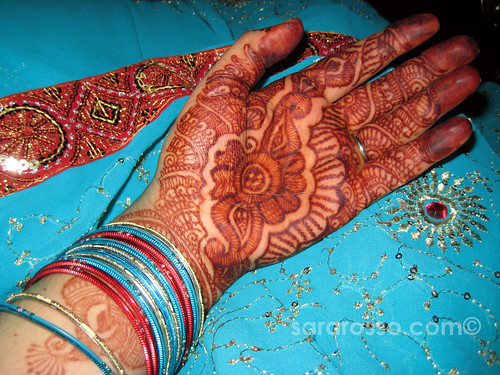
Varmala/Jaimala is the next phase of the marriage ceremony. In older times, varmala was a part of the main marriage ceremony. Practical considerations have forced weddings to take this new approach. Eastern/North Indian weddings usually take place late in the night, often starting at about midnight and lasting until the early hours of morning. The main wedding event usually is accompanied by the groom arriving with his family/friends in a procession called a Baraat (baa-raat.) Because the wedding ceremony is usually accompanied by a reception and a feast, the main marriage ceremony has been split into two parts. Varmala+Reception and then the more ritualistic part involving a priest. Many times the bridal party will be led on horseback or horse-drawn-carriage, and the groom will ride on horseback.
Immediately after the groom has arrived with the Baraat, the groom and bride meet and exchange garlands in the Jaimala ceremony. Once this ceremony has finished, the well wishers congratulate the groom and the bride and present gifts to them. Food is served during this ceremony, and pretty much everyone except closest relatives leave once the ceremony has finished.
The main part of the wedding starts after the Jaimala ceremony has finished. The groom and the bride sit beside the fire and the priest chants shlokas (hymns) and the groom and the bride exchange vows in front of many gods and goddesses. Towards the end of the marriage ceremony, a ritual called Phere (pronounced: Fair-ey, meaning "revolutions") is performed. In the Phere ritual, a part of the groom's attire and the bride's attire are tied together (symbolizing that they are now united) as they go around the ceremonial fire seven times. Each round about the fire symbolizes a part of life. The bride leads in first three rounds symbolizing that the earlier part of marriage is led by the bride. The groom leads in the last four rounds symbolizing that the later part of life will be led by him. Sometime during the ceremony, the groom puts a little sindoor (red powder) in the parting of the bride's hair and puts a mangalsutra (necklace) around her neck. These tasks symbolize that she is now a married woman, as all married Hindu women are supposed to wear sindoor in the parting of their hair for the rest of their married lives.
